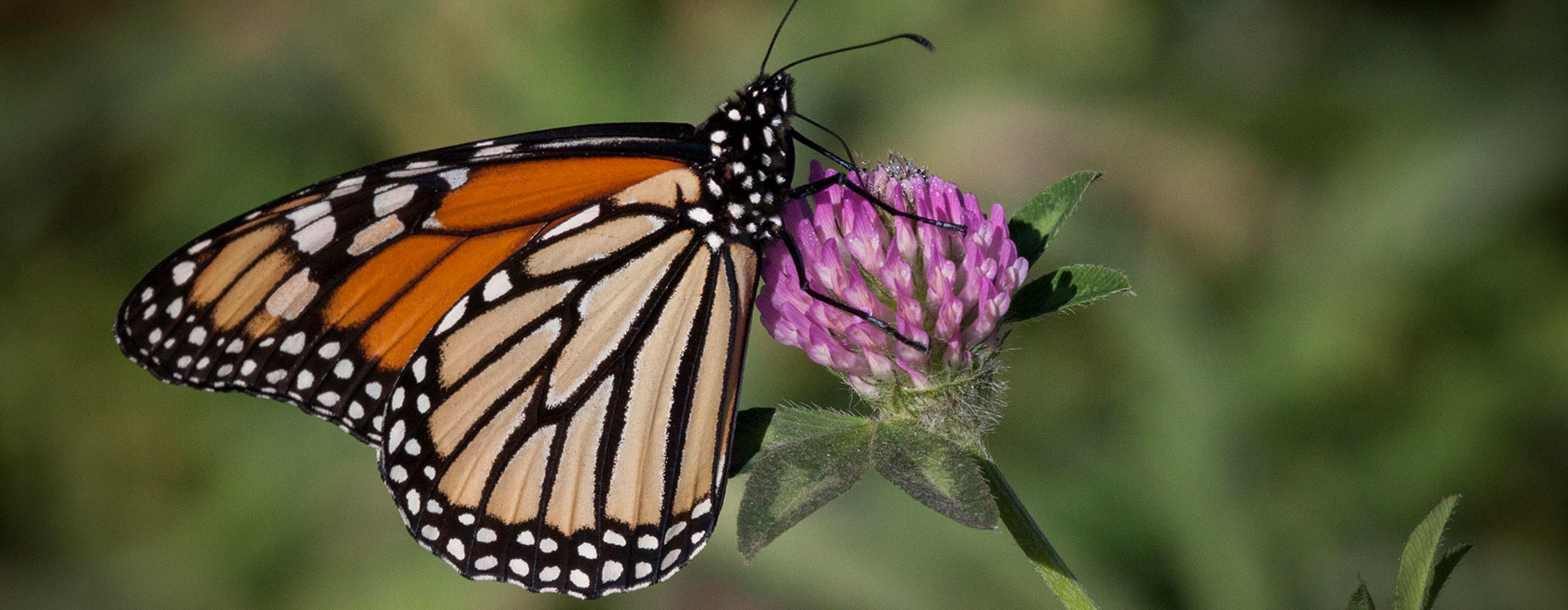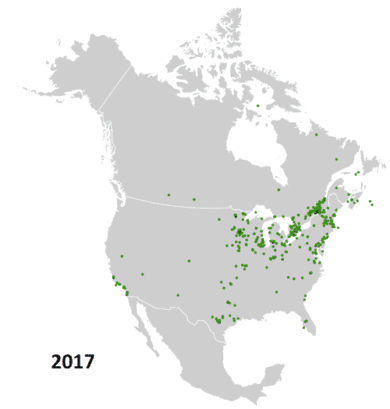Last winter, biologists reported that the eastern migratory Monarch butterfly population declined 26% from 2019 and covered just 2.1 hectares of forest in central Mexico. Biologists estimate that at least 6 hectares is necessary for a sustainable population. But how are the Monarch populations faring during other times in their annual cycle?
Over the last 5 years, the International Monarch Monitoring Blitz has provided a valuable snapshot for scientists of the monarch population status across the butterfly’s migratory paths in Canada, Mexico, and the United States. During the blitz, volunteers across North America survey milkweed plants for Monarch eggs, caterpillars, chrysalises and adult butterflies. This information helps biologists monitor populations and identify priority areas for Monarch conservation actions.
This year, during the Vermont Monarch Monitoring Blitz from July 28 to August 8, over 25 people helped the Vermont Atlas of Life capture a snapshot of late summer Monarch populations and productivity across the state as part of the international effort. Volunteers visited over 40 sites scattered across the state, some multiple times, to carefully count Monarchs.
During the blitz survey, volunteers carefully examined nearly 1,800 milkweed plants at 41 sites and counted over 200 eggs and nearly 300 caterpillars on them. Volunteers found Monarchs at most survey sites: 65% had eggs, 78% had caterpillars, and 61% had adult Monarchs.
“We’ll have to see as more data comes in, but this year is shaping up to be above average in most areas of Vermont,” said project leader Kent McFarland. “But we have to remember that only about 10-15% of the Monarchs that overwinter in Mexico come from the Northeast, so we hope other areas have done well too.”
Completing annual Vermont Monarch Monitoring Blitz in coming years will allow us to compare each year and regions to see how well they are doing across the state. We can also compare these results to other monitoring such as eButterfly checklisting and annual fall migration counts at stations like the Putney Mountain Hawk Watch.
Data gathered during the Vermont Monarch Monitoring Blitz is added to Mission Monarch by each volunteer. It is finalized and uploaded to the Trinational Monarch Knowledge Network, where it is accessible for anyone to consult and download.
Thank you to all of our volunteers! We hope you will join us in 2022 and help us make the Vermont Monarch Monitoring Blitz even bigger!
FACTS ABOUT THE MONARCH
- Monarch butterflies weigh less than a gram.
- There are two recognized migratory routes in North America: Eastern and Western.
- Migration covers 2,000 to 3,000 miles across three countries.
- The Eastern migratory population has declined by more than 80% in 20 years.
- The Western population has declined by 99% since the 1980s.
- Everyone can help the monarch by participating in community science, creating Monarch-friendly habitats, and spreading the word.








